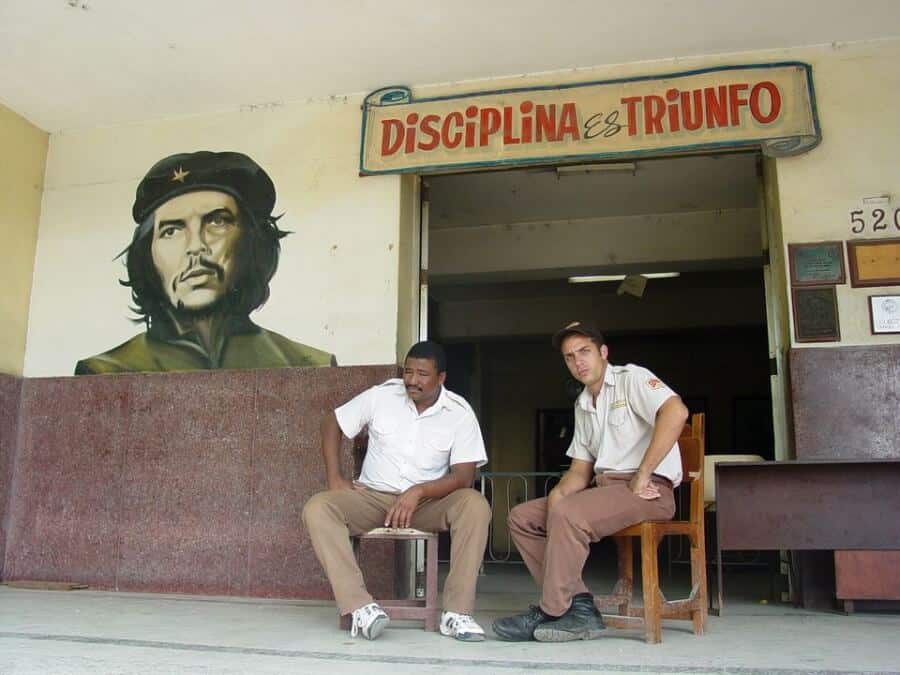Out of the almost 200 recognized countries of the world, Cuba is the first one coming to mind, when speaking about the most social of them.
Out of the almost 200 recognized countries of the world, Cuba is the first one coming to my mind, when speaking about the most social of them. On the “island of freedom” people celebrate family holidays with their neighbors and random acquaintances, and every second resident of Havana tries to speak with a tourist. But when it comes to social networks and online communication, Cuba rolls down from the top to the very bottom.
Although the claim that there is no internet in Cuba, can only be compared to believing there was no sex in the Soviet Union, the fact is there is, of course, internet there, but only for the ones who really crave it. Among them are the tourists and local daredevils. For the former, all the comforts are created in the 5 – and 4-star hotels, that include terminals with access to the World Wide Web. The rest have to work very hard to register on one of the social networks, and even more so to have a personal blog. This is understandable, because it is forbidden to connect to the internet from a house, and university websites are subject to censorship, post offices will take forever (and cost something) to check personal e-mail. But as they say, if you really want to, you will always find a way. Yoani Sanchez, a 37-year-old Cuban, managed to get into hotels under the guise of a German tourist for 5 years and within a 15-minute online session copied the pre-written post from a flash drive to her blog «Generation Y». Time magazine proclaimed the author as one of the 100 most influential people in the world, and her blog was included in the top 25. But only in Cuba were the true stories from the online diary considered too outspoken and therefore blocked.
That is why I was very surprised not only at the existence of Cuban profiles on the Couchsurfing webpage, but also at their number. I was even more pleased that every second person answered my request, despite a week delay. No one, of course, could provide a place to stay (the country prohibits such hospitality), but many were willing to meet. Cuba is a country of contrasts in general. In Havana, our guide was a good-natured doctor with a common surname Castro – the exact opposite of the expressive Fidel. With his help, we were taken care of by a local hospitable family in a so-called ‘casa particular’. Usually it is a single room with all amenities, which is rented to tourists for very little money. For this kind of business a family has to give 200-250$ to the state treasury monthly, which for ordinary Cubans equals annual earnings. Like many travelers, we chose a cozy room in the center of Havana for 30$ rather than a modest hotel room for 100$.
The second contrast for me was money, their class division, to be more exact. For Cubans, the so-called ‘moneda nacional’ is created, tourists, in turn, have to use CUC currency. The conversion rate is 24 to 1. For local “funny money” they sold us coffee and sandwiches in a little traditional cafe for their “own” local people, but this happened only because of Miguel. Later we figured out that without the presence of Cuban friends nearby, you will be asked for the same amount, but in the CUC currency. By the way, you can buy rum and cigars in state stores for “moneda nacional”, but such things as sugar, bread, and cereals are only given out with coupons, like in the old Soviet days. Cubans are also forced to shop for other blessings of civilization paying with CUC, but not everyone can afford it. So they try to weasel their way out any way they can. Miguel, for example, being a little embarrassed, asked me to bring him diapers for his son from Russia. Others meet up with foreigners, in order to go to bars at their expense. In the beginning it upset me, but then I came to terms with the fact that with such small things we can bring happiness to some people.
Many people need alcohol to become acquainted with new people. Cubans can do it without it, but they also think that it is much more fun with rum. Therefore, bypassing the Capitol and other attractions, Miguel took us to a “hot” place. From the roof of a Bacardi skyscraper we had to really get to the core of Havana. By the way, the most famous brand of Cuban rum, which was founded in 1862 by Facundo Bacardi Masso and his brother Jose, can be found, perhaps, in any bar in the world. Paradoxically, it doesn’t work this way in Cuba – here they use Havana Club on principle. The Bacardi family fled the island to the U.S. on the day when jubilant crowds of Havanans greeted revolutionaries entering the city. The only thing left is a sign of the legendary brand and an amazing observation deck in the first skyscraper of the country, which proudly bears the name Edificio Bacardi (Avenida de Bélgica, 261). From this height, frightening even to a seagull, opens, perhaps, the best view of Havana! Colorful colonial buildings, lightly sprinkled with the dust of history, the spires of the churches, and wide squares – all seem to rush their facades to the multi-kilometer strip of the legendary Malecon quay.
Scientists have long agreed that the social circle is easily extended with so-called communication mechanisms. Besides alcohol, these include various holidays and festivals. Everything is good in Cuba with both the first and the second. Getting to Havana, you understand the old fellow Hemingway, or rather his attachment to the Cuban capital. Sun, mojitos, sea, and the peaceful rhythm of life, which closer to the evening, fills with fiery dancing resembling a holiday that never ends. Bright Hawaiian homes and fancy cars, which can only be outdone by Cuban outfits, add to local flavor. Thanks to photogenic American cars, repainted numerous times, one falls in love with Havana instantly. Red, purple, and light green spots pass along the shabby Havana mansions and park near the gorgeous Capitol, where they wait for naive tourists. The overwhelming will to get a ride occurs at once, despite the sometimes exorbitant prices. Inside they resemble the cab of an old truck, but soon you start feeling like a heroine of a 50’s film on the dusty seat of a blue Pontiac, driving along the Malecon.
In addition to these heartwarming “cars”, Cuba has not less interesting vehicles. For tourists they invented the coco-taxi – a bright yellow booth, resembling a bitten orange, which is dragged by a black driver. As for public transport, everything is clear: for foreigners there are comfortable buses, for the locals – frayed ones. This duality in Cuba can be found in everything from currency to catering. But what looks the most outlandish of all the Cuban vehicles are those used for long distance travel. While tourists are cooled by air conditioners in the comfortable Viazul buses, locals are satisfied with flatbed trucks! In the back of a Soviet ZIL there are two iron beams welded for convenience purposes. The lucky ones sit there, others are standing. Through the narrow slits, the streaks of light fall on passengers, illuminating not only Cubans themselves, but also their goats and chickens. When you drive for three hours in such a truck, you can gather the maximum number of comments, if not completely changing your status. And yet, to be social in Cuba, the Internet is not needed. And why would you need one in the country, that is, in fact, one big social network?
Support us!
All your donations will be used to pay the magazine’s journalists and to support the ongoing costs of maintaining the site.
Share this post
Interested in co-operating with us?
We are open to co-operation from writers and businesses alike. You can reach us on our email at [email protected]/[email protected] and we will get back to you as quick as we can.









